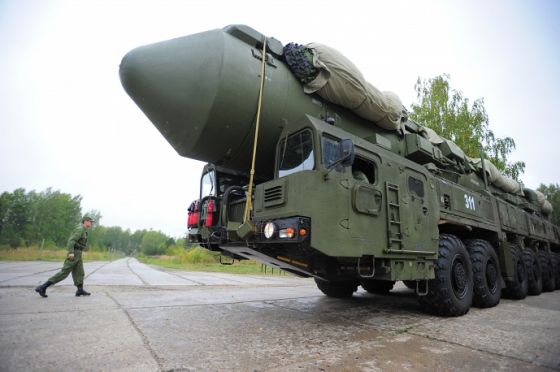Exercises have begun in the Teikovo Missile Division of the Strategic Missile Forces, during which the Yars strategic complexes will pass along the combat patrol routes in the Ivanovo Region.
The command has attracted considerable forces and resources to these trainings - about a thousand servicemen and more than a hundred pieces of equipment. "During the exercises, strategic rocket scientists will work out the issues of making marches up to 100 kilometers long, dispersing units with changing field positions, their engineering equipment, organizing camouflage and combat protection," the Russian Defense Ministry reported.
They added that a curfew service has been organized on the routes, which is engaged in protecting the column with large-sized equipment, monitors its passage through control points, monitors the radiation, chemical and biological situation.
It is known that the tasks assigned to the division include, among other things, the search, blocking and destruction of conditional sabotage and reconnaissance formations. The rocket scientists will do this not only during the day, but also at night.
Special equipment is widely used in the Strategic Missile Forces to combat saboteurs. For example, a remote mine clearance machine "Foliage"is used to detect mine-explosive devices installed on combat patrol routes. Its electronics are able to detect mines and land mines at a distance of up to 100 meters and in a sector of up to 30 degrees. Moreover, "Foliage" recognizes not only engineering ammunition, but also improvised explosive devices with electronic components. They are neutralized with the help of electromagnetic radiation. At the same time, the "Sheets" equipment disables mine-explosive devices, blocks the electronic components of the fuses or provokes their detonation.
There is also a Typhoon anti-sabotage vehicle at the disposal of strategic intelligence officers. It was created on the basis of the BTR-82 armored personnel carrier. The vehicle is equipped with a navigation system and means of countering radio-controlled explosive devices, a thermal imager for night reconnaissance, an echolocation system and an unmanned aerial vehicle for aerial surveillance. This technique is able to detect enemy objects at a distance of up to five kilometers, and foot saboteurs - from three.
Yuri Gavrilov

